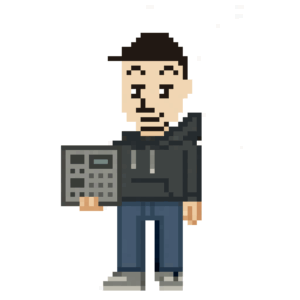Web4 and Web5 are emerging frameworks that represent the future evolution of the internet, building upon the foundations of Web1.0 (static web), Web2.0 (interactive/social web), and Web3.0 (decentralized web based on blockchain). While these terms are not yet standardized, they are increasingly discussed in the tech industry as blueprints for a more intelligent, decentralized, and user-empowered digital world.
Table of Contents
Web4: The Symbiotic and Immersive Web
Core Concepts:
- Web4 is often described as the “Symbiotic Web,” where humans and machines interact seamlessly, creating a symbiotic relationship between artificial intelligence (AI), the Internet of Things (IoT), and immersive technologies like AR/VR.
- The focus is on integrating physical and digital experiences, enabling intuitive, real-time interactions across devices, and personalizing services based on user needs and context.
- Web4 aims to distribute power and control away from centralized authorities, further decentralizing the internet by empowering users and smaller organizations.
Key Features:
- AI Integration: Machines enhance human potential, acting as intelligent assistants.
- IoT and Mobility: Real-time connections between devices, people, and environments.
- Immersive Experiences: Use of VR/AR for more natural, engaging digital interactions.
- Personalization: Services adapt dynamically to user preferences and behaviors.
- Decentralization: Moves beyond Web2.0’s corporate control, but not as radically as Web5.
Example Use Cases:
- Healthcare IoT devices monitoring health in real-time.
- Smart environments that respond to user emotions and actions.
- Metaverse platforms offering seamless, personalized virtual experiences.
Web5: The Ultra-Decentralized, User-Sovereign Internet
Origin and Vision:
- Web5 is a concept advanced by Jack Dorsey and his team at TBD (a subsidiary of Block, formerly Square), envisioning an “ultra-decentralized” internet where users have complete control over their data and digital identities.
- It seeks to address the limitations of both Web2.0 (centralization, data silos) and Web3.0 (partial decentralization, reliance on tokens and third-party storage).
Key Features:
- Decentralized Identifiers (DIDs): Users manage their own digital identities, independent of platforms or service providers.
- Verifiable Credentials (VCs): Secure, user-controlled digital credentials for authentication and access.
- Decentralized Web Nodes (DWNs): Users host and control their own data, rather than relying on centralized or third-party storage.
- No Native Tokens Required: Unlike Web3, Web5 does not depend on cryptocurrencies or tokens for its core functionality, focusing instead on technological advancement and user empowerment.
- Self-Sovereign Identity: A single, portable identity that users can use across all platforms, eliminating the need for multiple accounts and passwords.
Example Use Cases:
- One digital identity for all online services, reducing password fatigue and data fragmentation.
- Secure personal health records accessible only with user consent.
- Decentralized social media profiles and content ownership.
- Enhanced privacy and reduced risk of data breaches, as users control access to their information.
Comparison Table: Web4 vs Web5
| Feature/Focus | Web4 (Symbiotic Web) | Web5 (Ultra-Decentralized Web) |
|---|---|---|
| Main Goal | Human-machine symbiosis, immersive experiences | Complete user control over data and identity |
| Technologies | AI, IoT, AR/VR, metaverse, blockchain | Decentralized identifiers, verifiable credentials, DWNs |
| Decentralization | High, but still includes some group/organizational control | Extreme; user is sole owner of data/identity |
| Personalization | Highly personalized, context-aware services | User-driven personalization, privacy by default |
| Identity Management | Enhanced, but not always self-sovereign | Self-sovereign, portable identity |
| Data Storage | Distributed, but may involve third parties | User-controlled, no third-party dependence |
| Use of Tokens | Possible, depending on platform | Not required |
| Example Applications | Smart homes, metaverse, AI assistants | Decentralized social media, health records, credentials |
Summary
- Web4 is about creating a seamless, intelligent, and immersive internet experience through the integration of AI, IoT, and immersive technologies, focusing on symbiosis between humans and machines and furthering decentralization.
- Web5 takes decentralization to its logical extreme, giving users full ownership and control over their data and digital identities, eliminating the need for centralized platforms or tokens, and enabling a truly user-centric internet.
Both concepts are still evolving, but together they represent the next steps toward a more intelligent, equitable, and empowering digital future.


Leave a Reply